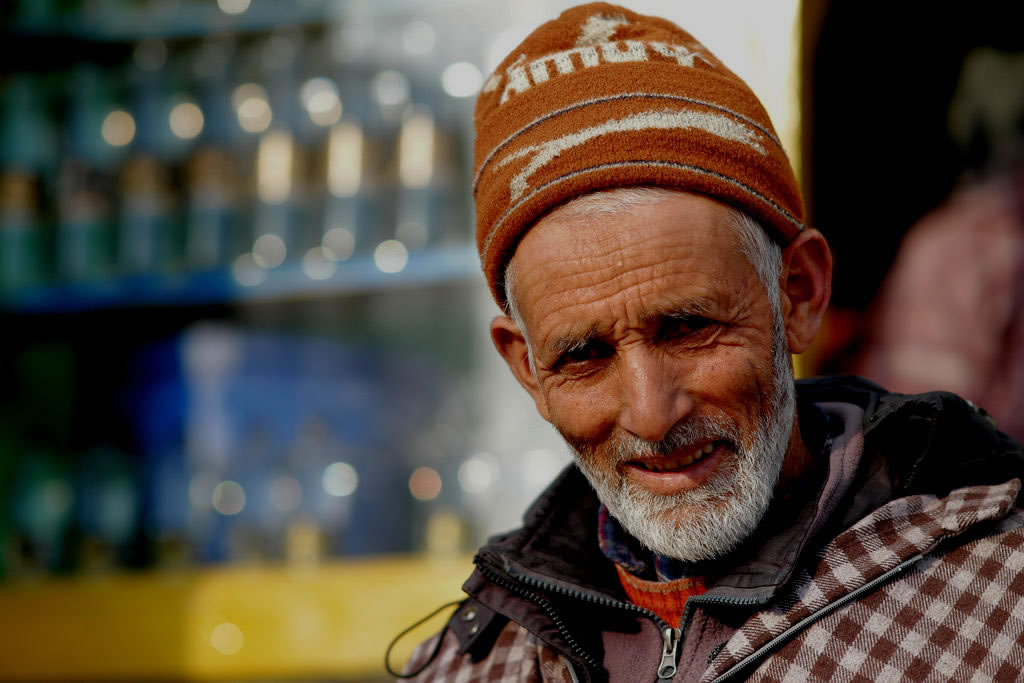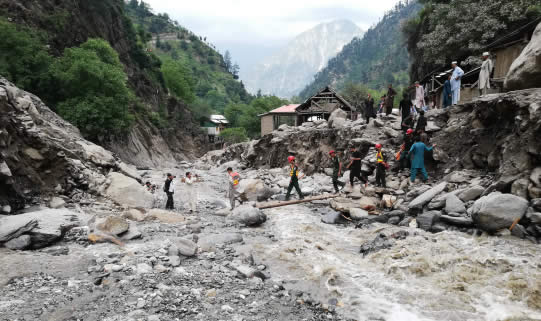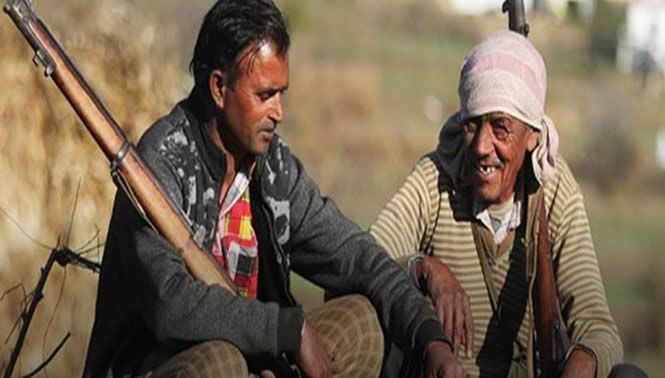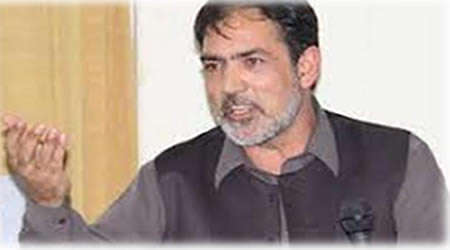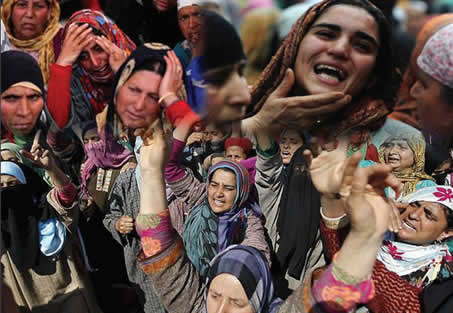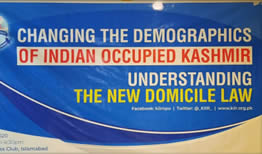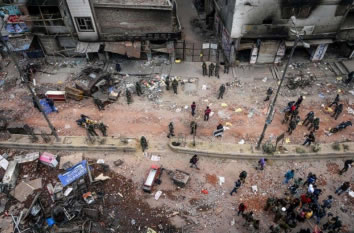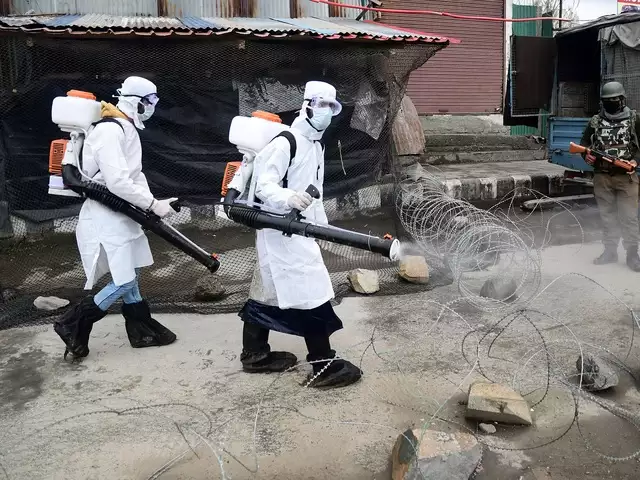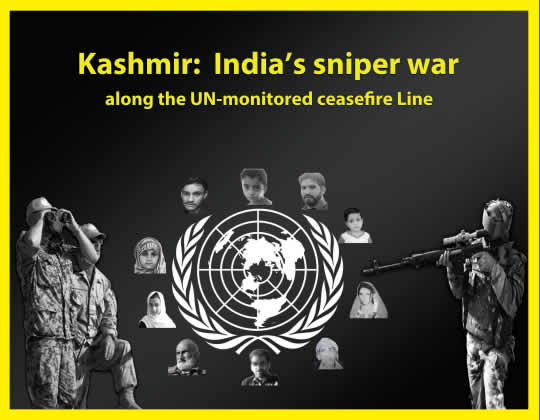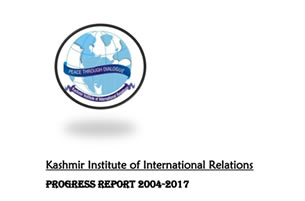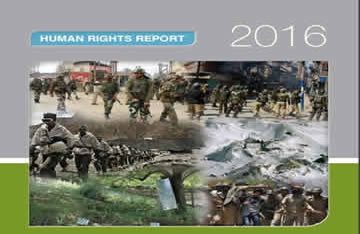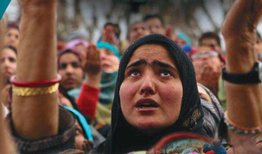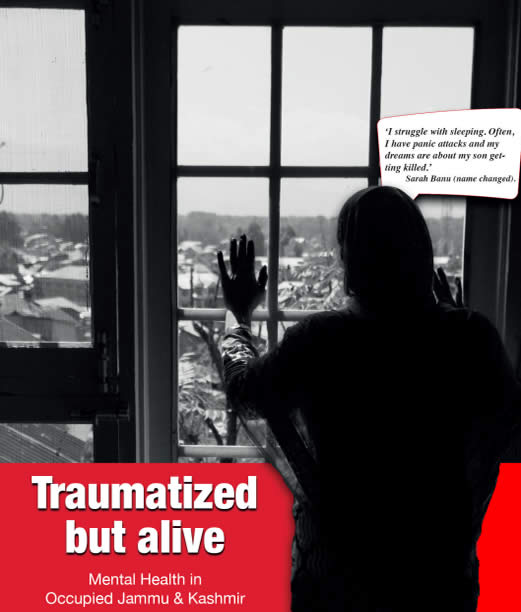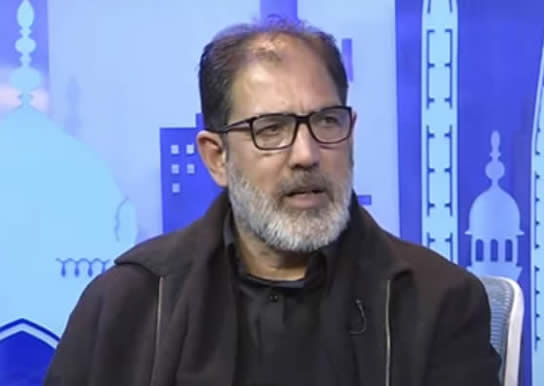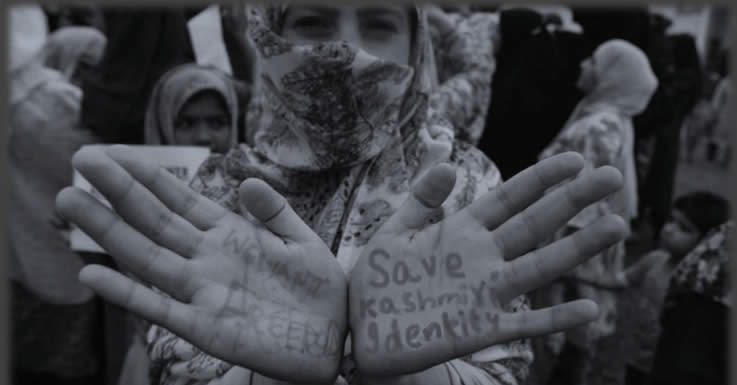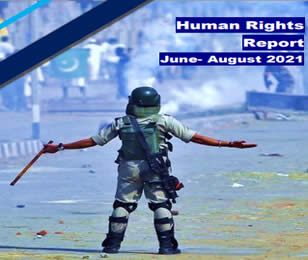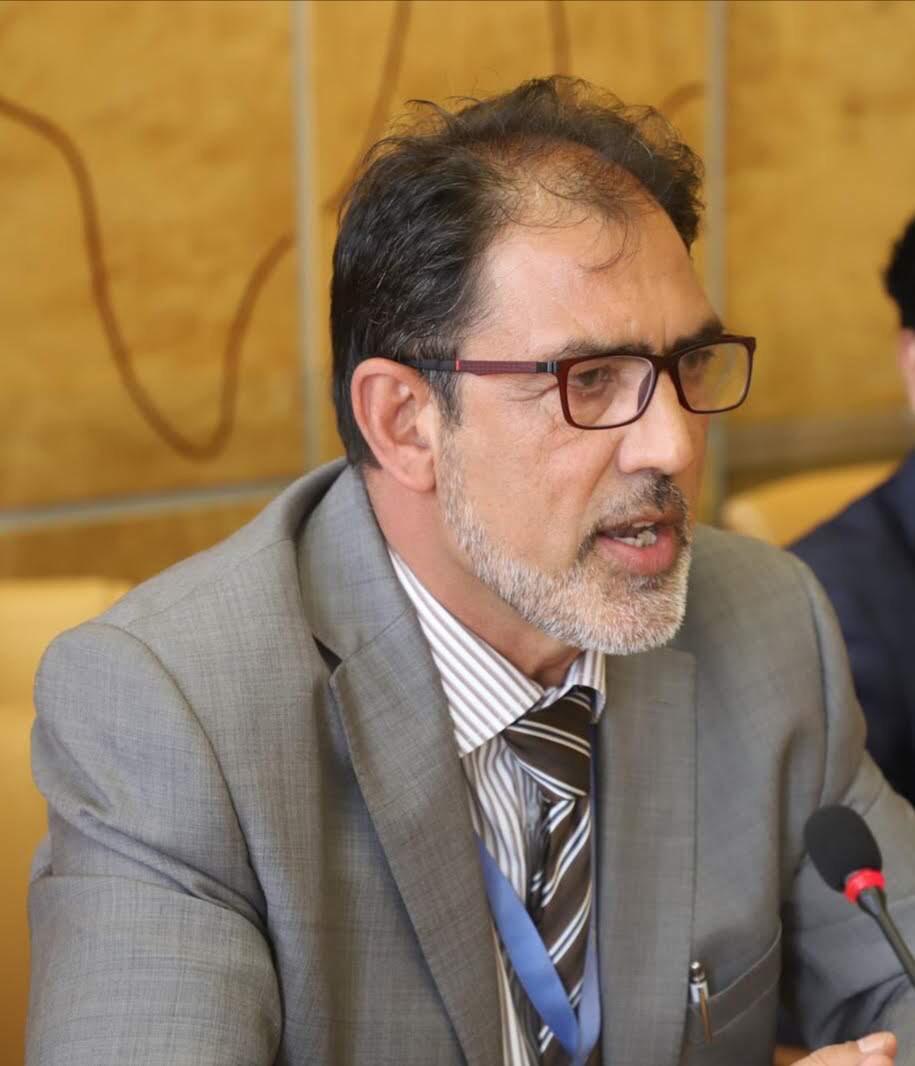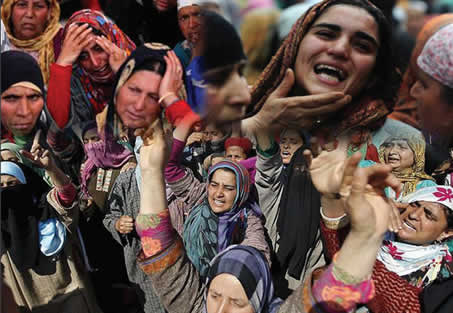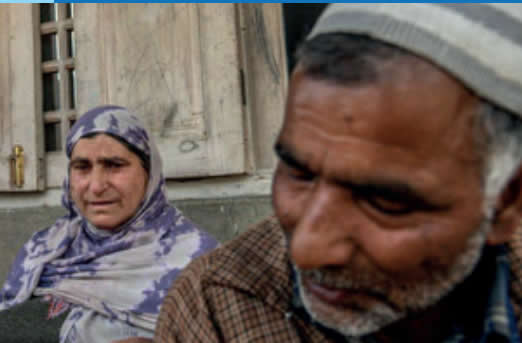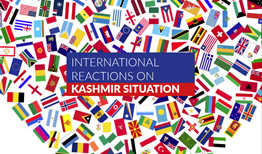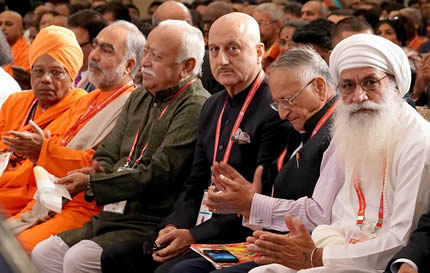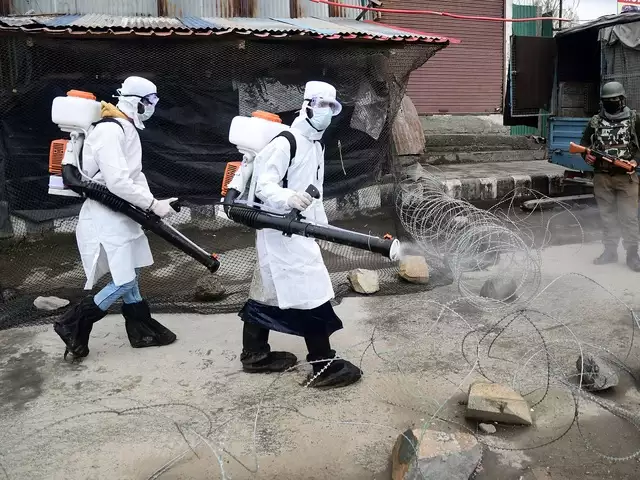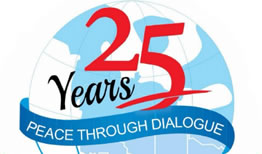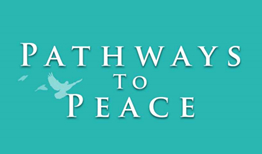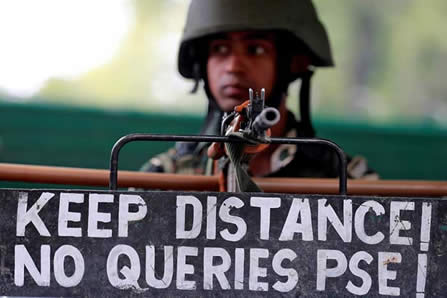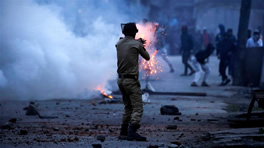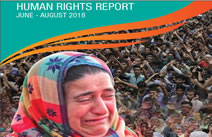Illusion of peace - unmasking the myth of normalcy in Indian occupied Kashmir
Juliette Al Hajji
University College London
BA European, Social and Political Studies with law and German year 3
Illusion of peace - unmasking the myth of normalcy in Indian occupied Kashmir
Nisar Ahmed Thakur
Summary / main ideas of the text
The paper makes it clear that Indian oppression in Kashmir is multifaceted, allowing for a systemic and long term repression of human rights. It dwells notably on the Indian authorities’ creation of a facade of normalcy in the region, so as to deter uprisings and international
involvement in the region. 2019 was a major turning point in the region, when after multiple amendments, the Indian authorities rendered Article 370 of the Indian Constitution obsolete. This Article gave Jammu and Kashmir a special legal status. Its abrogation thus allowed the Indian authorities for more power over the region. Since then, the Indian authorities have developed and strengthened their grip on Jammu and Kashmir by attacking multiple aspects of the Kashmirian society.
One of the key aspects of India’s grip over the region has been the enactment of draconian anti-terror laws such as the UAPA and AFSPA. These laws give the Indian authorities unwarranted power, notably the power to arrest individuals for up to two years without trial. This was the case for example, of Fahad Shah, founder and editor in chief of Kashmir Walla, an independent news and opinion website. In light of the drastic consequences an infringement of such laws has on individuals, they are sufficient in themselves to create a chilling effect on society, hindering individuals’ freedom of expression by fear of being sentenced.
In addition, Indian authorities seek to create an illusion of normality in order to further suppress any risk of dissent and revolt. This is done inter alia by a restriction on the usage of media and communication; i.e. a restriction on freedom of expression, a restricted access to Kashmir so as to prevent external knowledge of the situation, and intimidation and harassment of Kashmiri journalists and activists. Finally, the Indian authorities sought to open up the region to foreign economic activities, in theoptic of affirming its grip on the region and establishing the illusion of normality. The reality is that Kashmir faces growing unemployment rates and economic decline. Indeed, it is impossible to develop economic activity all the while violating fundamental human rights. There is clear evidence that the right to political self-determination specifically has a positive effect on economic growth.1 As such, this illusion of normalcy permeated by economic growth will only remain an illusion, should India continue to violate human rights in the region.
All in all, these techniques put together allow for the human right violations to continue, further permeated by an ongoing silence from the international community. A combination of multiple factors is necessary for positive change to occur in the region. A few examples mentioned in the paper include dialogue and diplomacy between India and Pakistan, demilitarisation of the region, and international mediation.
Development on the text’s arguments
Developing on the illegality of the draconian laws mentioned by the paper, under the UAPA, the burden of proof is placed on the individual to satisfy the court or government that they are not a terrorist. This goes against the principles established in international law, notably Article 11 (1) of the Universal Declaration of Human Rights which explicitly states that individuals are innocent until proven guilty. This is one example out of many which make it clear the UN must take action against India’s actions, seeing as they quite literally go against the principles the UN itself has internationally enshrined as legal.
Yet, there is a grave lack of action from the international community. After Article 370 was abrogated for example, the UN discussed the issue but did not take any action.2 Why is that?A theory was brought forth by Stephen P. Westcott in his paper “The Case of UN Involvement in Jammu and Kashmir”.3 Indeed, while Article 1 (2) of the UN Charter recognises the “equal rights and self-determination of peoples”, Article 2 (7) states that “nothing contained in the present Charter shall authorise the UN to intervene in matters that are essentially within the
jurisdiction of any state
Resolution 47 (S/RES/47) issued by the UN recognised that both India and Pakistan should put a halt to their military presence in the region and organise a plebiscite so as to give the Kashmiri people the right to self-determination. The paper however argues that “limiting the choice for the people of Kashmir to accession into either India or Pakistan” privileges the norm of state sovereignty, rather than self-determination. Furthermore, it was brought forward by India’s UNAmbassador in 2019 when Article 370 was rendered obsolete, that the countries involved in the discussions on Kashmir at the UN deem the issue to be a bilateral one (between Pakistan and India), thus not requiring attention from the Council and making the doctrine of State supremacy prime over the doctrine of self-determination.4 It should be borne in mind that the mere fact of saying that India has as such supremacy over Kashmir is the problem itself, and goes contrary to international law. This illustrates the contradictory usage of the UN legal apparatus.
The resolution of the conflict is hindered by the power relationship between the UN, India, Pakistan, and Kashmir. This provides a potential and partial explanation as to why UN action remains timid. Another reason for this silence, as was rightfully highlighted in the text, is the facade of normalcy developed by India. This is for example perpetuated by the organisation of guided tours for diplomats and media to create a ‘picture perfect’ image of Kashmir, highlighting economic development and normalcy, all the while disregarding the human rights violations taking place. The situation is all but normal. The soldier-civilian ratio of 1:8, making it one of the most militarised zones in the world suffices to illustrate the gravity of the situation. Nonetheless, this facade has the effect of deterring international intervention, hindering any hope of any international mediation of the conflict.
Indeed, for the situation to evolve positively, real engagement from the international community is necessary. This can first and foremost happen by denouncing India’s actions at the UN. International intervention can come forth by civil engagement. Civil engagement is however hindered by India’s repression on Kashmir. It is thus hard to get out of this vicious circle. However, such a superficial normalcy cannot last in the long term. Such a harsh retainment of power has the very clear effect of deepening the resentment of Kashmiris towards the Indian authorities. As specified by the text, “[t]he government’s fixation on optics rather than substance underscores its disregard for the plight of the region’s inhabitants, who continue to suffer systemic injustices and economic deprivation.” Notwithstanding repression, the people of Kashmir still find ways to express their demands; i.e. access to standard human rights.5
'
Conclusion
All in all, the Article provides a comprehensive overview of the situation in Kashmir, delving both into the current situation, and offering potential solutions. Furthermore, having included multiple names and concrete examples allows for individuals’ stories to be heard; an important part of human rights. Finally, comparing the situation in Kashmir to international human rights standards allows for a greater understanding. This was notably pertinent in regard to the illegality of the Draconian laws. Indeed, while the arbitrariness of the laws are clear in themselves, the point was made stronger when compared to the international legal standard. However, as a consequence of the focus on empirical evidence, the paper remains at times descriptive of the situation, rather than analytic.
As it pertains to the situation in Kashmir, it is quite clear that contrary to what the Indian government seeks to show, the situation is all but normal. Rather, grave human rights violations are happening and it is imperative that more is done, notably by the international community, to address these violations and stop them from happening in the future.
Bibliography
Ahmed Thakur, Nisar. “Illusion of Peace”. Kashmir Institute of International Relations,
https://www.kiir.org.pk/Reports/illusion-of-peace-2213.
Hans-Otto, Sano, Alexandra Sigrid, and Jørgensen Stinne. “Human rights contribute positively to
economic growth.” Danish Institute for Human Rights, December 4, 2018,
https://www.humanrights.dk/news/human-rights-contribute-positively-economic-growth.
“UN discusses Kashmir for third time since India ended autonomy.” Al Jazeera, August 6, 2020,
https://www.aljazeera.com/news/2020/8/6/un-discusses-kashmir-for-third-time-since-india-en
ded-autonomy.
Westcott, Stephen. “Case of UN Involvement in Jammu and Kashmir.” In The United Nations:
Friend or Foe of Self-Determination? E-International Relations Publishing, 2020,
https://www.e-ir.info/pdf/81046.
“Jammu and Kashmir legislature passes resolution asking India to restore its special status.”
Independent, November 6, 2024,
https://www.independent.co.uk/asia/india/jammu-kashmir-article-370-special-status-bjp-narend
ra-modi-b2642374.html.
“Indian soldiers engaged in deadly gun battles with Kashmir rebels.” Al Jazeera, November 10,
2024,
https://www.aljazeera.com/news/2024/11/10/indian-soldiers-engaged-in-deadly-gun-battles-wi
th-kashmir-rebels.
Related Reports
